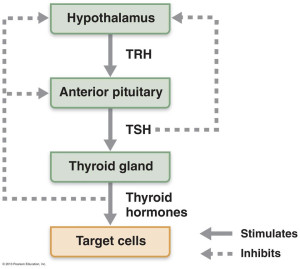Tyranny of the TSH
The Tyranny of the TSH
Let’s talk about further thyroid testing. In an effort to reduce laboratory costs and find ever cheaper methods of evaluating thyroid function, the TSH has become the more commonly accepted first line test with “reflex” follow-up.
Now this assumes three very important concepts.
- The feedback mechanism between the pituitary and the thyroid is intact and functional.
- It assumes a “normal distribution.” That is, a typical “bell shaped” curve of all values from low to high.
- That we can assign “reasonable” upper and lower cut-off values.
Idealized Thyroid Feedback
Refer to figure 1. You can see that TSH is part of a functional feedback loop. High values infer hypothyroidism (under-active thyroid) and low values infer hyperthyroidism (over active thyroid). The TSH values are opposite (inverse) to thyroid activity. A compensatory mechanism.

But there is human variation. It is an idealized loop that is not as precise as an integrated circuit. A result of overly simplified mechanistic thinking. There are rare situations where hypothalamic dysfunction can cause very low TSH levels rather than feedback from low thyroid activity. This is termed central hypothyroidism.
We have steadfastly maintained over the last 15 years that complete thyroid analysis should include a TSH, free T4 and a free T3. Frequently adding the reverse T3 and thyroid antibodies. Refer to our previous post. The TSH is a poor measure of free T3 — the active metabolite or driver of metabolic function.
